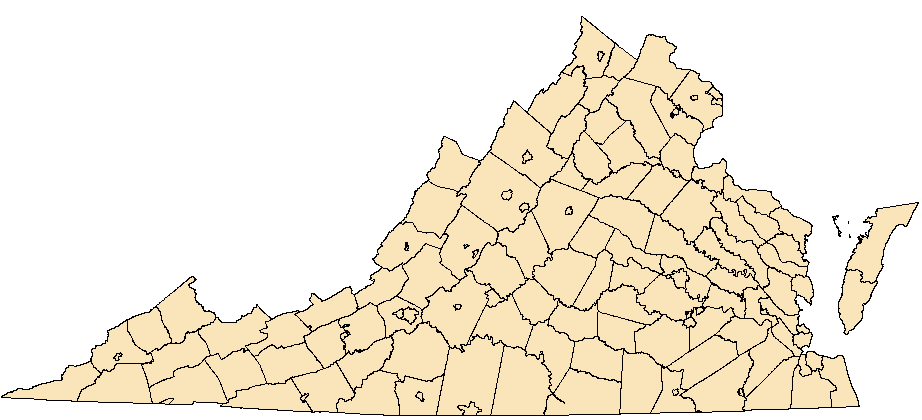Lycaena hyllus (Cramer, 1775)
Bronze Copper
NatureServe Global Rank: G5
Virginia State Rank: S1
VA DGIF Tier: IV
Federal Legal Status: None
Virginia Legal Status: None
Description: The Bronze Copper is a large species for the family Lycaenidae, but a small-medium sized species in general. There is considerable sexual dimorphism displayed on the dorsal surface. The male is brownish-colored with a coppery iridescence, and the female had orange patches with scattered black spots. The ventral side of both is an orange front wing with gray outer edges and a gray hind wing with orange outer edges. Both wings display an array of black dots.
Similar species: The dorsal side of the male is distinct, while the dorsal side of the female looks similar to the American Copper (Lycaena phlaeas). The American Copper, however, is much smaller and brighter orange with fewer black spots. The ventral side of the American Copper also has much less orange on the back wing, but again, size is the obvious indicator.
North American Range: Along the coast, Maine to the Delmarva peninsula, and inland from Maine to Virginia and West Virginia west to the Rockies.
VA Observations by Locality: Accomack | Highland | Montgomery | Accomack | Prince William






Flight season and broods: Up to three broods, May through September.
Habitat and Food Plants: The Bronze Copper is mainly found in low-lying wet areas such as meadows, ditches and pond edges. They mainly host on Docks (Rumex spp, especially Rumex orbiculatus) but also have been reported on knotweeds (Polygonum).
Behavior and Ecology: Bronze Coppers perch low on plants near their hosts or nectar sources and if disturbed seem to fly only a small distance before perching again. They take nectar at various flowers including smartweeds (Polygonum and milkweeds (Aesclepias). They over-winter as an egg.
Population trend and potential threats: Habitat destruction could impact the well-being of this species, but it does seem to have the ability to inhabit disturbed and successional habitats as well.
Management practices: Monitor and protect occupied habitats.
References: Cech, R. and G. Tudor. 2005. Butterflies of the East Coast. Pg. 250. Princeton University Press.
Opler, P. A. 1992. A Field Guide to Eastern Butterflies. Peterson Field Guides
Pyle, R. M. 1981. Field Guide to North American Butterflies. National Audubon Society.
Virginia Department of Conservation and Recreation, Natural Heritage Program, 600 E. Main St., 24th Floor, Richmond, VA 23219
This atlas was compiled
by the VA Natural Heritage Program with funds provided by the VA Dept. of Game and Inland Fisheries through a state wildlife grant
from U.S. Fish and Wildlife Service
Questions/Comments? Check the contacts page |
Internet Privacy Policy Statement
Last Modified: Friday, 26 February 2021, 03:21:56 PM